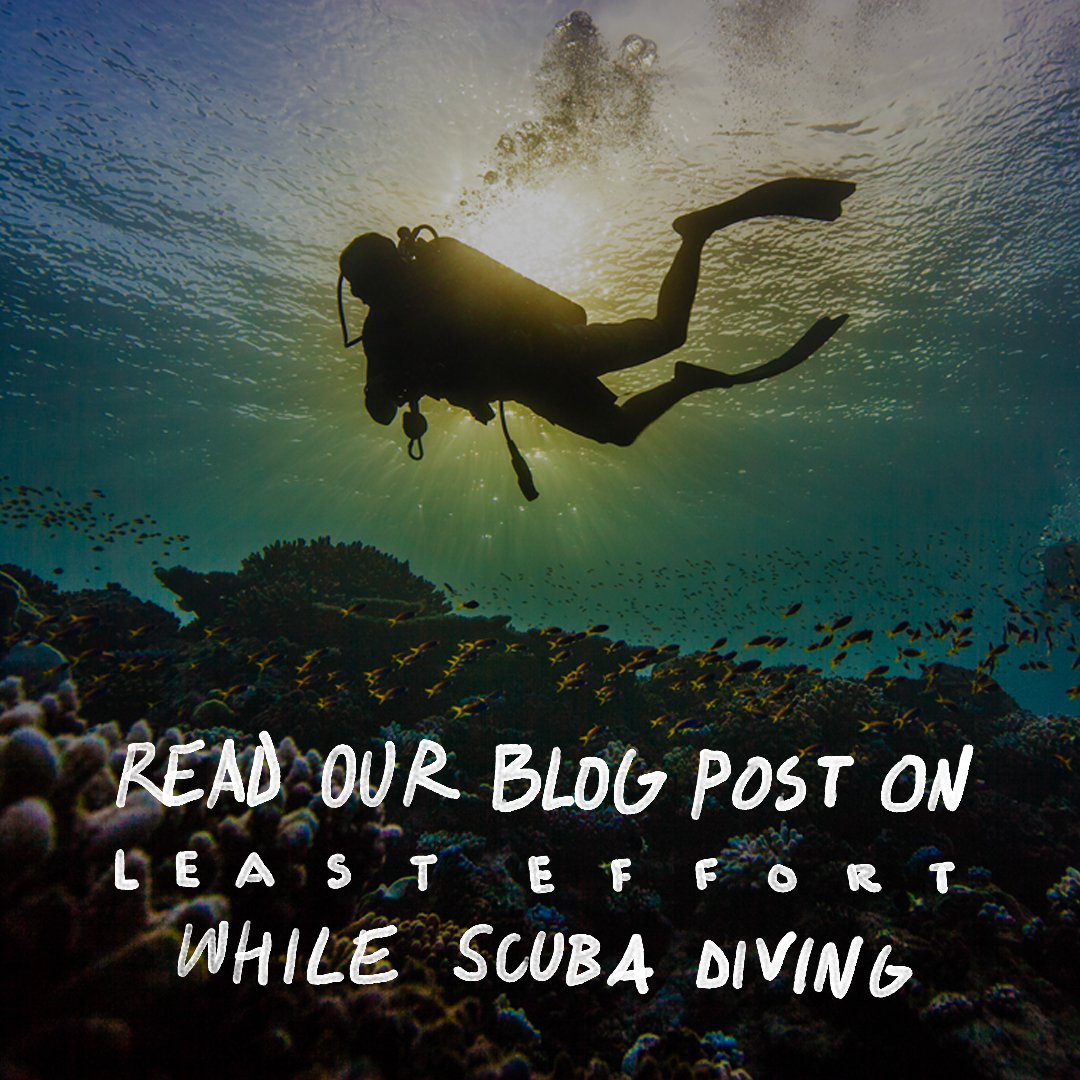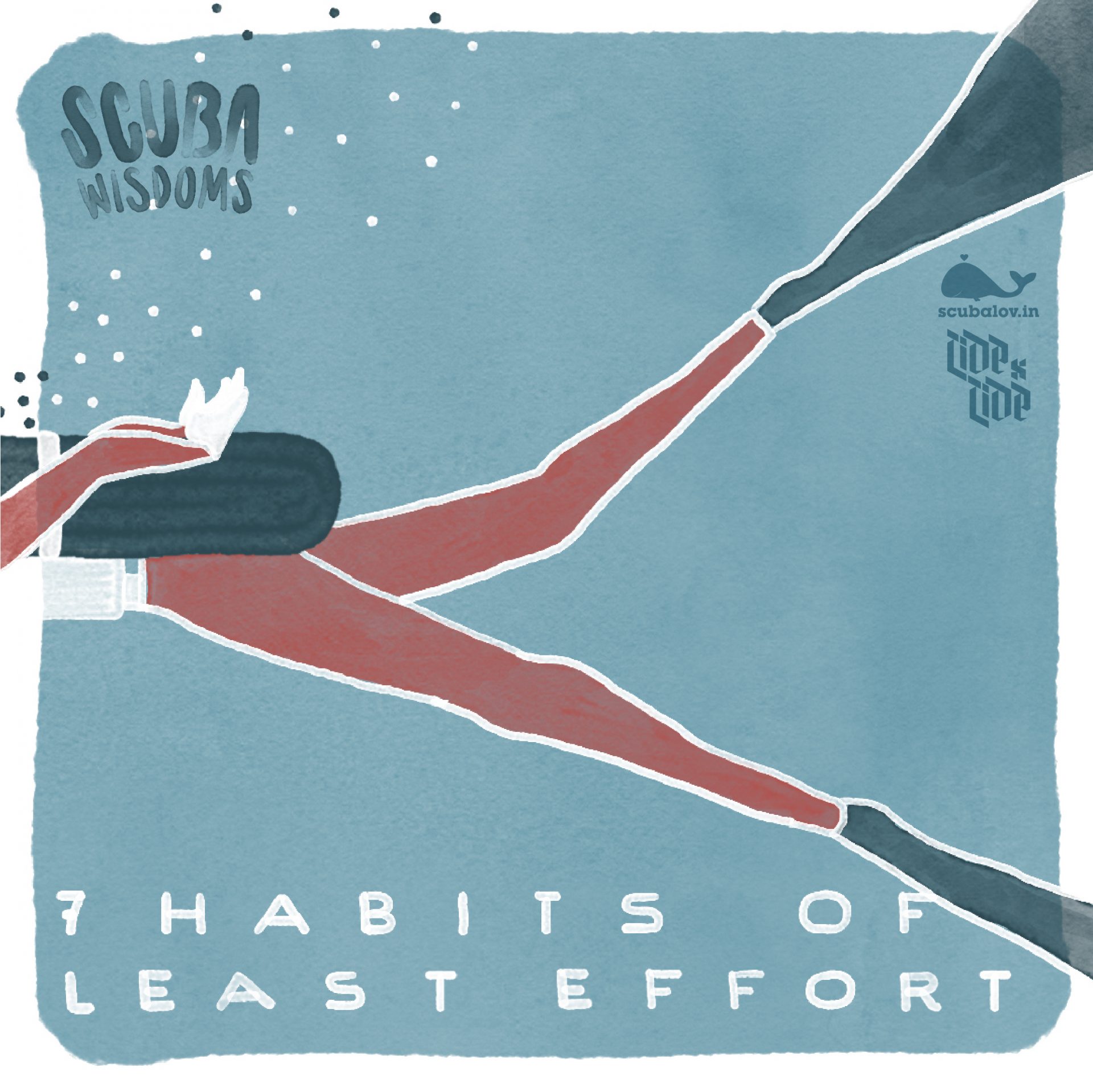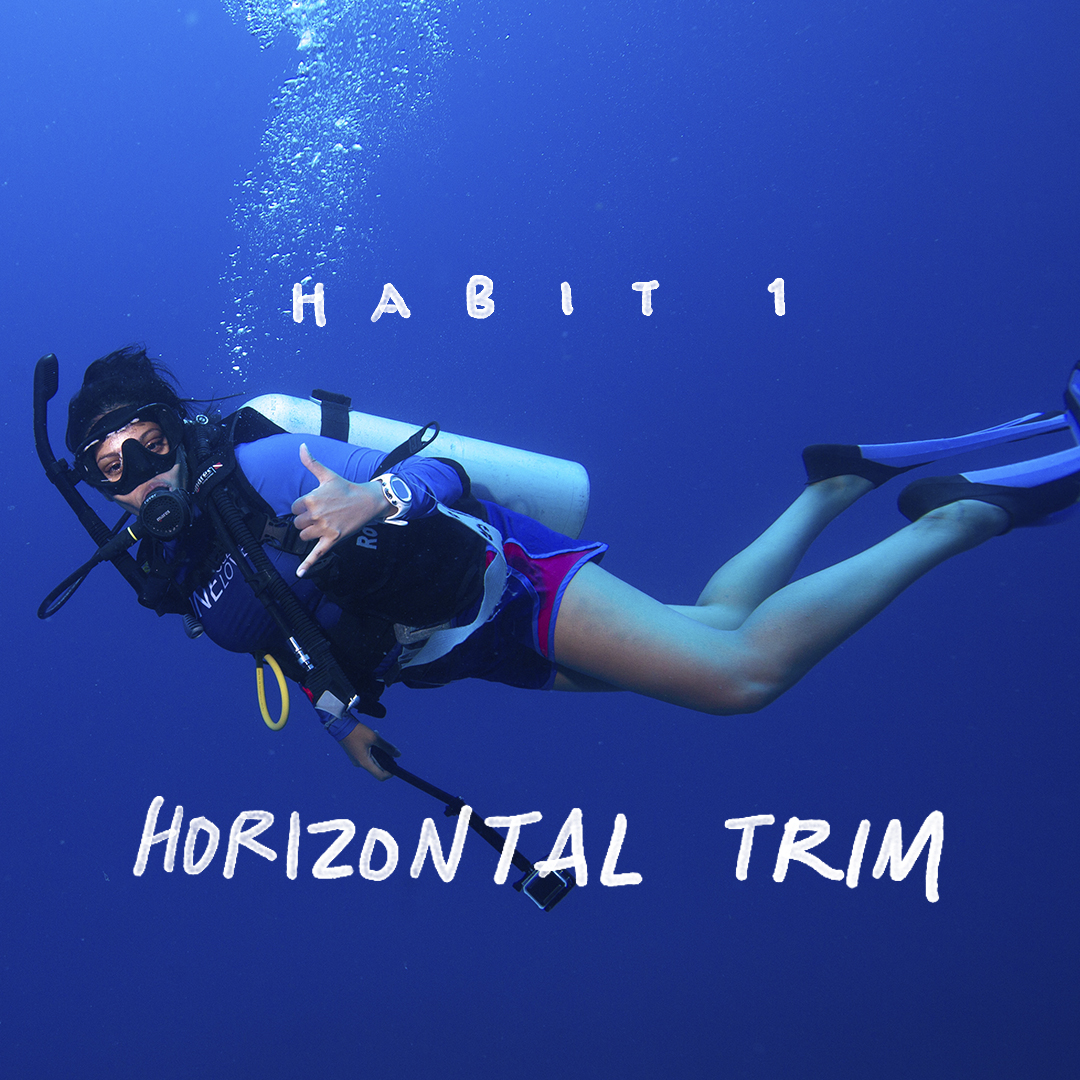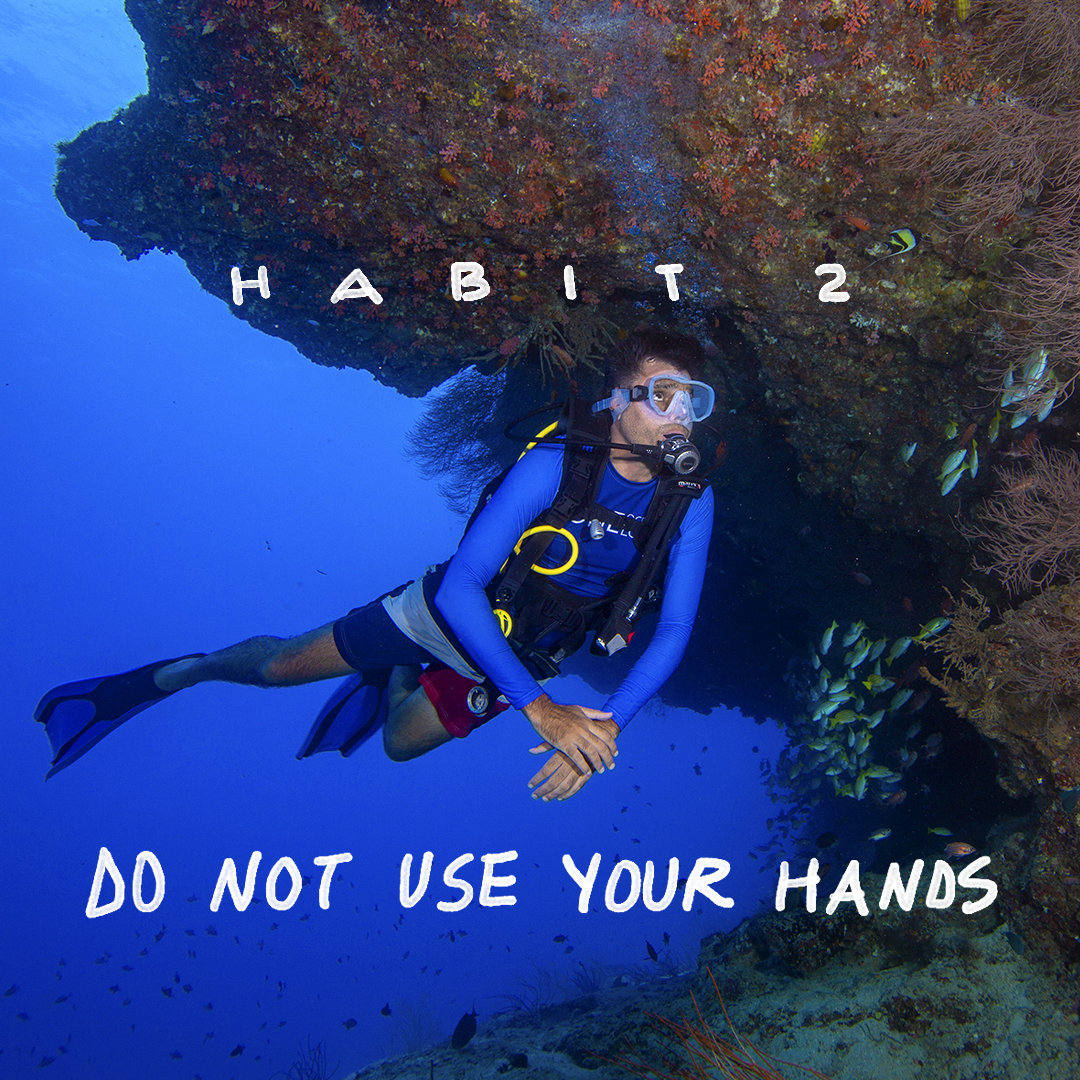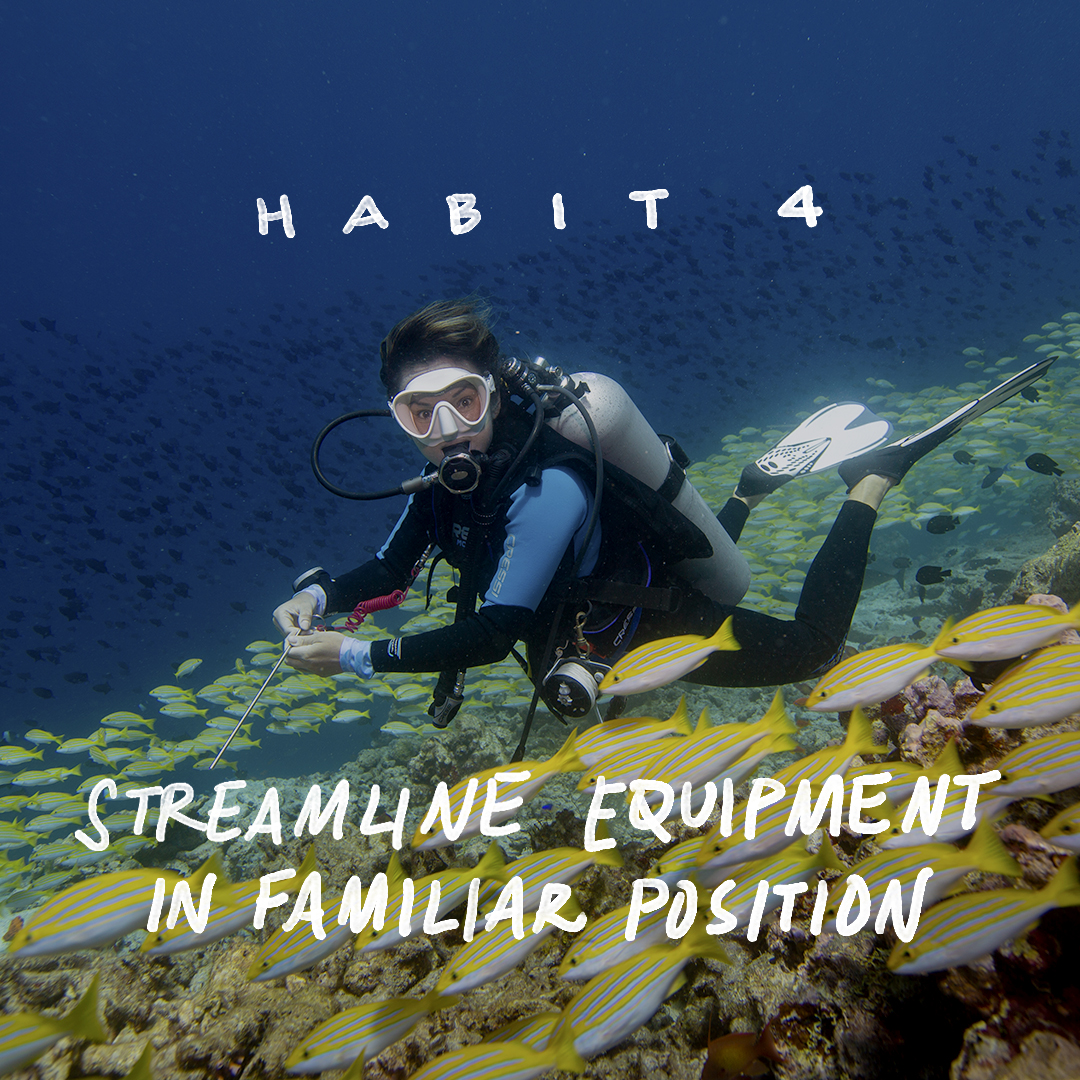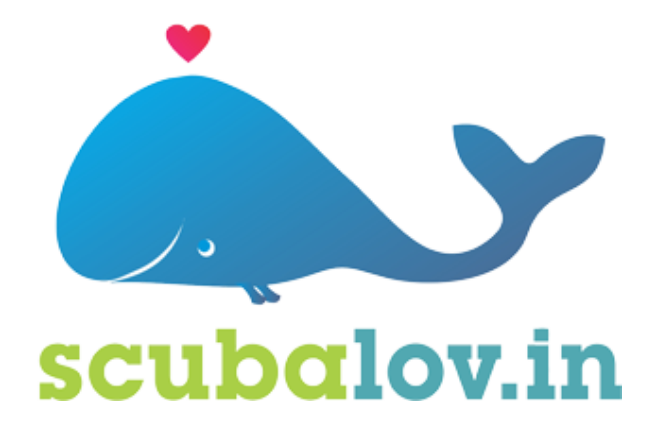Both kicks are important to know (non negotiable) for you to be a great, efficient and effective diver: the flutter to work against the current, the frog kick to generally be a more environmentally conscious and safe diver.
Habit 4 = Streamline Your Dive Equipment
We have looked at how a streamlined dive position, an efficient kick, and no use of your hands whilst scuba diving can help you with enjoying your dive in the most relaxed and comfortable manner. Before you get into the water it is very important to also streamline all your dive equipment.
With this I mean have a jacket or BCD that is fitted snugly, and nicely strapped onto your body (all releases are secured so nothing can move). A loose jacket with a 15kg tank on your back will just make you wobble underwater, and not be of any aid to be still and in tune.
Moreover your weights on your weight belt should be properly placed. If you have an even number put the same number on each side of your hips and a little forward; with an uneven number of weights put the last weight on your back. What you should avoid is an unequal balancing of weights as it will make you tilt to one side, or have all the weights on your back as it will put too much load there, and finally push your legs down (leading to a diagonal position).
Make sure that all your hoses are properly tucked away: your octopus hose should be locked in and with one hand movement come out in an emergency; letting it dangle will create unnecessary drag and might damage sea life. Your Console with depth / pressure gauge should preferably be fitted in such a manner that with one head movement down you can check your air and depth, and no drag is created to avoid damage. Doesn’t make too much sense to look for your depth / pressure gauge whilst scuba diving, as it will create a distraction.
Any extras you have (ie camera, slate, torch, reef / rock hook etc) should be attached to one of the D-Rings (BCD or other) and / or stored in one of your pockets. You should know where they are attached so you know how to get them. At the same time they again should not be dangling loose so you avoid creating damage, or being slowed down when you get hooked behind something.
All this positioning of equipment in your familiar place and simultaneous streamlining of it will again enable you to dive in an efficient and effective manner. Both factors will allow you to respond fast without wasting too much time or energy, and creating too much drag.
10 years ago when I was teaching in Koh Tao one day I had to go to a dive site very close to the jetty as the weather was pretty poor. It was not really a dive site but a small rock underwater that we could circle to look at the fish and at the same time explore the sand for critters. At that time I had one fun diver: as in all my briefings I told him to dive slowly and stay with me.
As soon as we descended, my diver forgot all instructions but one, and bolted ahead. In less than 10 seconds he was out of sight. I had told him we would go around the rock, so I waited and after 4 minutes he had done his round.
Did he see anything? No! Did he waste any air? Oh yeah 40 bars was gone after Scuba Schumi had completed his tour! So I corrected him underwater and finally as a buddy team we completed a 45 minute dive.
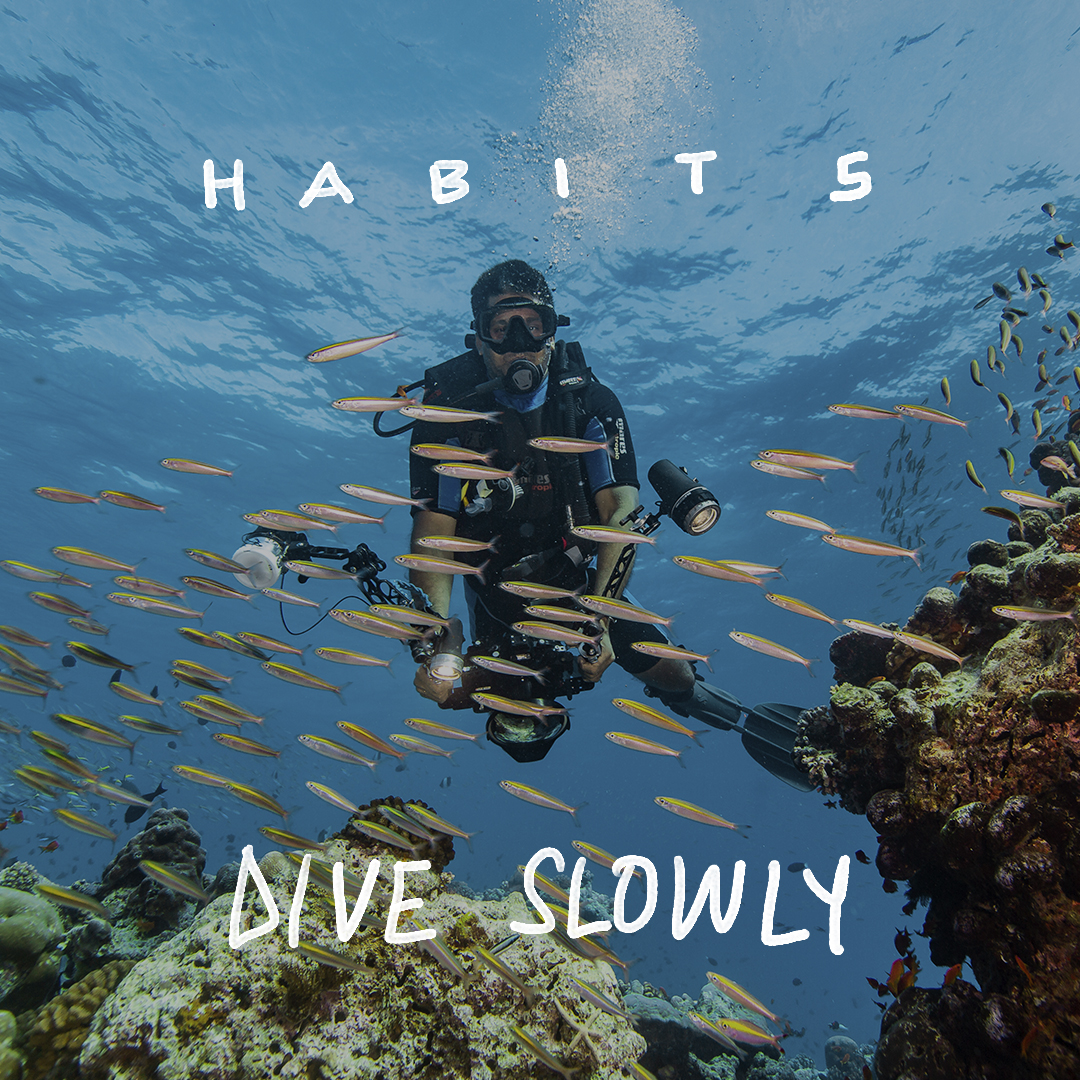
Photo credit @anupjkat
Diving is not a race, you have to enjoy and take your time to explore the dive site. It is a discovery underwater, where you slowly patrol and look at all small niches and corners for some unexpected inhabitants. Going slow will set you in your zen mode, as you are not exerting yourself. Moreover once you are aware, at ease and calm, you start looking around you and taking the environment in. You are diving into National Geographic so you better take your time!
Habit 6 = Positional Awareness
After 15 years as a professional I still dive with a local guide when I dive somewhere new. They know the dive sites superbly well and know how to navigate them. Every great dive professional will give you an in depth briefing on how to dive a site.
How and where to enter the water, where we need to reach, how the currents are, how to work with or against the currents, where to see which of your most favourite marine life and how to approach them. This can only be explained by a local guide who is knowledgeable about the site.
I always pay great attention when professionals are doing a dive brief because that’s where 75% of your job is done: you explain well, you prevent most mistakes or problems from happening later underwater (when it is not always easy to remediate without spoiling one part of your dive).
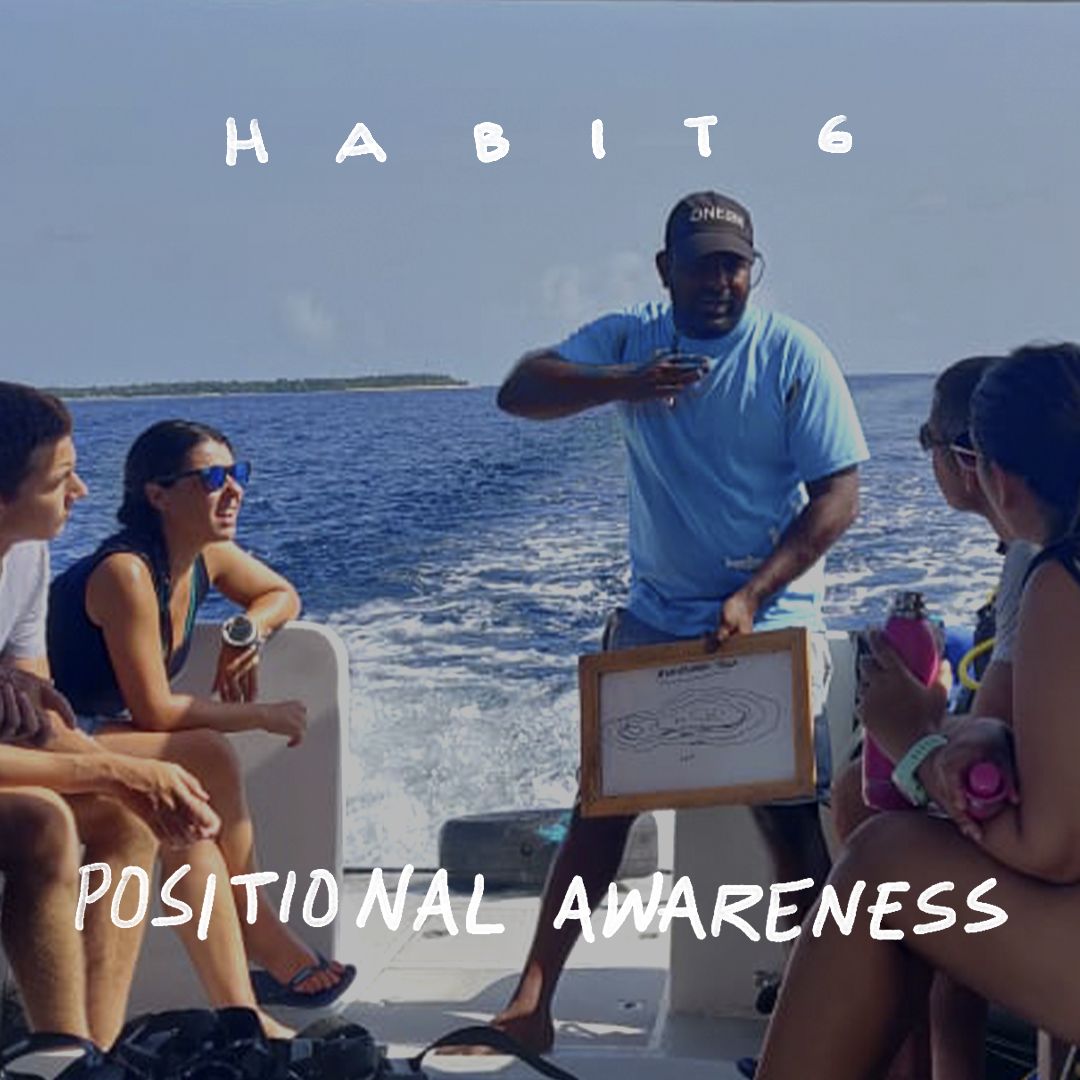
Photo credit @high_hat19
All their positional pointers (on how to dive a site) give me great awareness so I am prepared, and can enjoy the dive at the fullest. So listen to the dive briefing and be around your dive leader when diving. When you are all alone and not prepared, it might lead to unwanted situations where lots of efforts are wasted.
Habit 7 = Hook into the Rock (Reef)
To dive or not to dive? To kick or not to kick? To use your rock / reef hook or not?
As explained in previous habit the role of your dive guide is crucial. He knows the dive site, the local conditions and how currents will affect the dive. On a rare occasion your guide might advise to cancel or postpone a dive as conditions might be too dangerous. This can happen very rarely when tides are at its peak and above & underwater topography (like Komodo National Park) accelerate their effect.
If we go ahead with a dive under strong currents it is imperative that you make a quick descent to the bottom (if no buoy line is available) or you use the line to hold on to (always preferable). On your way down or once away from the line it is imperative that you do your best finkick to stay close to your guide. He / she knows where to get you so you can start enjoying your dive. Great guides can let your drift to that starting point, but sometimes due to unforeseen circumstances, one has to correct and kick to adjust the underwater route.
From time to time currents are so strong that we only dive for a short distance to come to a viewing point where we attach ourselves with a rock hook. A reef or rock hook is a hook made out of stainless steel attached to a 2 meter or longer webbing that ends up in a carabiner that can be attached to your BCD. This rock hook allows you to connect to a rock (not reef as it might get broken) and due to its webbing and attachment to your BCD, once hooked in you do not need to kick (not fighting the current) and are floating at a safe distance from the reef (after putting a little air in your BCD).
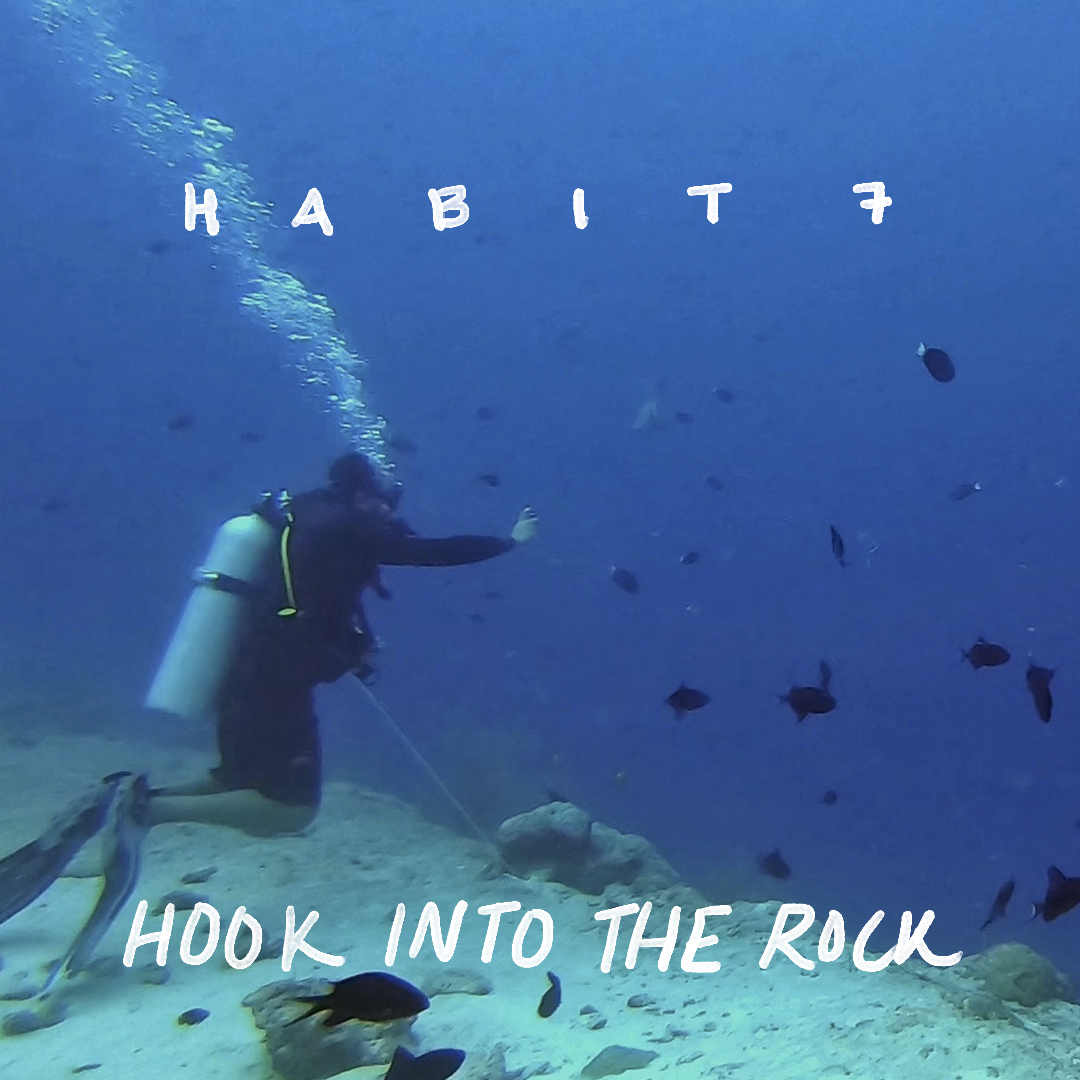
Photo credit @row_row
How to enter and start your dive under the expert supervision of your guide together with the use of a rock hook can save you a lot of effort underwater (when you land up at the wrong place).
Make your life easy and comfortable underwater when you scuba dive. Once you have your
breathing and
buoyancy under control, you have to start focusing on a few techniques or habits that allow for “relaxed” diving under any conditions.
A horizontal trim, with an effective kick and no use of hands, together with a familiar streamlining of your equipment, a slow pace, positional awareness and use of a rock hook will make the most prepared diver out of you.
Enjoy your dive
Jurgen VAN DUFFEL
PADI MSDT 485871
SSI AOWI 14883
